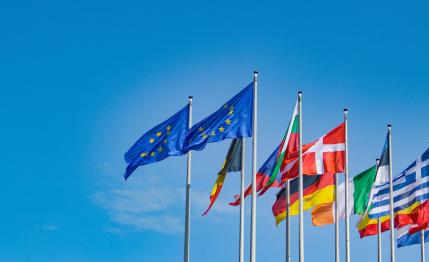
On 28 February 2017, the Council of the European Union (EU), representing the Environment Ministers of all EU Member States, agreed on a common position on how to reform the EU Emissions Trading System (EU ETS) in phase IV, which will start in 2021. The adopted General Approach largely aligns with the draft Council proposal prepared by Malta, which currently holds the rotating presidency in the Council. The decision comes two weeks after the European Parliament passed its proposal for reforming the EU ETS on 15 February 2017. The last phase of negotiations had focused on some key aspects of the reform, namely possible additional measures to more quickly re-establish scarcity in the European carbon market, details of the climate funds funded from EU ETS revenues and the ratio of auctioned vs. freely allocated allowances, including the question of carbon leakage.
On the first point, strengthening ambition of the system, the Council agreed to double the rate at which the Market Stability Reserve (MSR) could withdraw allowances from the EU carbon market from 12% to 24% from 2019 to 2023 (the Parliament would only double the rate until 2022). The Council also proposed to continue cancelling allowances in the MSR after 2023 onwards if certain conditions apply, rather than a one-off cancellation of 800 million allowances in 2021 as proposed by the Parliament. According to the Council’s proposal, the amount of allowances available in the MSR at the beginning of a trading period should not exceed the amount of allowances auctioned in the previous period. Any allowances in the MSR exceeding that amount would be cancelled automatically. In line with the Parliament, the Council also supports increasing the linear reduction factor (LRF) of the cap to 2.2% annually until at least 2024, up from 1.74% currently.
Regarding allocation, the Council agreed to in principle maintain the 57% share of auctioning vis-à-vis free allocation of allowances. Currently, to maintain the allocation share (e.g. in case benchmarks are set too high), a Cross Sectoral Correction Factor (CSCF) applies, which reduces the level of free allocation across all sectors by the same relative factor. For phase IV, both Council and Parliament propose that once free allocation claims have been finalized, the amount of allowances up for auction is reduced as required instead of applying the CSCF. This would change the relation between free allocation and auctioning. The Council wants to limit that shift to two percent, effectively reducing the minimum auction share to 55%. This is higher than the Maltese proposal (one percent) but less than the five percent proposed by Parliament. If the shift cannot make up for the excessive claim of free allowances, the CSCF would still apply.
Council and Parliament were in agreement that 2% of the auction revenues should go into the Modernization fund, which assists ten lower-income Member States in modernizing their power sector and making energy efficiency gains. Both bodies also supported extending the Innovation Fund, which supports demonstrations of innovative technology in energy intensive industries, renewables, and carbon capture and storage. The Parliament suggested using 600 million allowances from the auction share in the fourth phase for the Innovation Fund, while the Council proposed to use 400 million allowances that otherwise would have been allocated for free and 50 million from the MSR.
There was also a consensus to freely allocate 100% of allowances in sectors that are strongly exposed to carbon leakage, such as the steel and cement industry. Regarding the other sectors, Parliament had voted to only offer district heating 30% free allocation while the remaining sectors would have to purchase allowances by auction. The Council voted to provide 30% free allocation to all non-exposed sectors.
According to the Parliament position, the EU should use 3% of auction revenues to create a fund to compensate companies affected by indirect costs from higher electricity prices, allowing Member States to use up to 20% of their auction revenues for additional financial support. The Council mentions no fund but encourages Member States to limit their indirect cost compensation to no more than 25% of their auction revenues.
With the positions of the European Parliament and the Council now finalized, trilogue negotiations among the three EU decision-making bodies, the EU Commission, Parliament and Council, can begin. A final agreement is expected in the second half of 2017.

